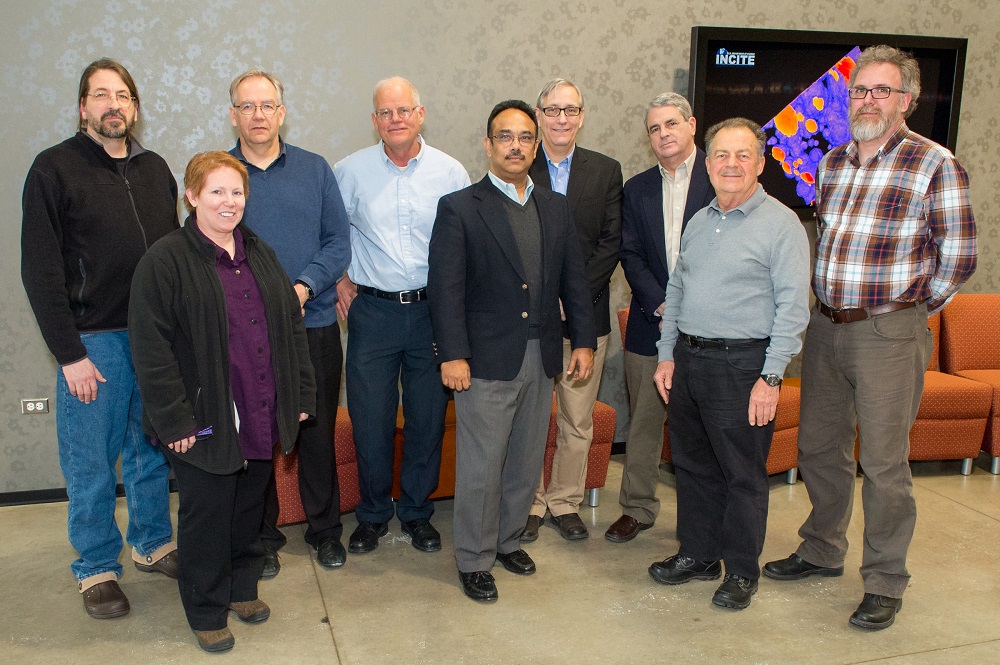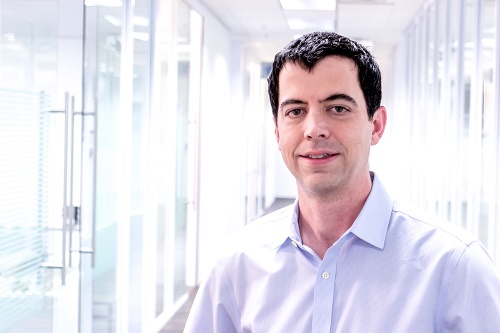In April 2015, U.S. Department of Energy Undersecretary Franklin Orr announced that Intel would be the prime contractor for Aurora: a leadership-class, 200 petaflops supercomputer to be installed at Argonne National Laboratory in 2018. The new system—part of the Collaboration of Oak Ridge, Argonne, and Lawrence Livermore (CORAL) initiative—aims to be 20 times more powerful than Argonne’s current Mira system. Power consumption will top out at a peak of 16.5 megawatts, just 3.4 times Mira’s energy level. Among other requirements, Aurora must support mission-critical computing from day one, bolster US competitiveness, and move the industry significantly closer to exascale computing. It needs to deliver breakthrough capabilities for both traditional HPC and data analytic applications. And it must mesh with future product plans for both Intel and Cray, Intel’s key collaborator on the initiative.
This article is the first in a series that goes behind the scenes to explore the making of the forthcoming Aurora supercomputer. We’ll share what we learned in interviews with more than a dozen Intel technologists, plus insights from individuals at Cray and the DOE’s Argonne Leadership Computing Facility (ALCF), where Aurora will reside and where technologists are co-designing the system.
You’ll hear how the three organizations are working together to manage the risks and deliver an optimal solution for DOE science. You’ll get a peek under the hood and a glimpse of the technology highlights. And you’ll see the human side. What draws people to such a high-stakes project? What keeps them awake at night? What do they hope their work will mean for DOE—and for HPC users everywhere?
Opportunities and Risks
Aurora is a landmark supercomputer that represents significant new opportunities for Intel, Cray, DOE, and the industry. Aurora will not only enable a new wave of scientific and technical computing for DOE and its research partners, its innovations, delivered at smaller scales by Intel and Cray, will also help drive HPC’s continued expansion into enterprise data centers around the world. These smaller-scale systems will no doubt spur breakthroughs for researchers and commercial users alike.
With Intel as the prime contractor, Aurora offers a high-visibility showcase for Intel Scalable System Framework (Intel SSF)—a chance to demonstrate the full power of integrating Intel’s latest technology advances within a flexible, unified architecture. Aurora will incorporate the forthcoming Intel Xeon Phi processor, codenamed Knights Hill, deployed on next-generation 10nm process technology. The system’s interconnect will utilize a next-generation Intel Omni-Path fabric implemented in silicon photonics, along with an advanced memory hierarchy. The file system, based on Intel Enterprise Edition for Lustre Software, will provide more than 150 petabytes capacity, with throughput of more than a terabyte per second. Intel HPC Orchestrator will help simplify integration, deployment, and operations.
Aurora also advances Intel’s ability to excel at the systems thinking that’s essential to keeping HPC on its faster-than-Moore’s-Law performance curve. “Aurora is the flagship to show what Intel SSF is capable of,” says Jake Wood, CORAL program manager at Intel Federal. “It’s all about systems-level thinking and unprecedented technology integration.”

But there are a range of risks, as well—from the basic financial responsibilities of the prime contractor, to designing with leading-edge technologies, to managing such a large and complex undertaking. The Aurora design includes next-generation Intel technologies that were only on the drawing boards when the project started. The undertaking involves deep collaboration among DOE, Cray, and Intel, and the breadth of innovations means that Intel is drawing resources from multiple divisions across the company. The CORAL team at Intel bridges enterprise and government, chip design and software solutions, platform engineering and system packaging, and more. The scale of the project presents new challenges for everything from software design to system validation.
And although Intel has been part of numerous government contracts, you have to look back to the vaunted Accelerated Strategic Computing Initiative (ASCI) Red supercomputer—the first teraflops system—to find such a large-scale program where Intel was the prime contractor rather than ingredient supplier.
Meet the Maestro
While Al Gara is the architect of the Aurora supercomputer, Jake Wood is the program manager and project foreman, responsible for ensuring that all the moving parts line up correctly, the juggling pins stay up in the air, and the system comes together as specified. He is also program manager for Intel’s other DOE collaborations, including R&D for exascale computing.

Wood is a 20-year Intel veteran who grew up a town or two over from Intel’s Jones Farm campus west of Portland, Oregon. He headed to Chicago for college, earning BS degrees in Industrial Engineering and Manufacturing Engineering from Northwestern University. But Wood was eager to get back to the camping and fishing opportunities of the Northwest. Intel was staffing up its Fab 5 fabrication facility in Aloha, Oregon, and Wood signed on. His first position was night shift operations manager, helping to deliver first-generation Intel Pentium processors.
After advancing through a variety of manufacturing engineering positions, Wood took advantage of an opportunity that he says ended up transforming his professional life. In 2005, Intel sent him and his family to MIT for two years to participate in MIT’s Leaders for Manufacturing Program, now called the Leaders for Global Operations. Wood came away with a Master’s in Civil Engineering, an MBA from MIT’s Sloan School of Management, and a vastly expanded set of skills and insights.
“MIT gave me more context and insight around the business side of manufacturing—more business acumen and critical thinking in the manufacturing space,” Wood recalls. When he returned to Oregon, he moved into manufacturing management and leadership positions at Intel’s D1D facility, overseeing the work of hundreds of technicians and their managers, and ensuring their work kept the factories operating on Intel’s precision cadence.
A Framework for Brilliant People to Solve Problems
The CORAL position came at a time when Wood was looking to stretch in a new direction, and Intel was looking for someone with a unique skillset to drive the execution of the Aurora program plan. “Intel knew this program needed a different skillset to go drive a physical deployment, handle system integration, and take on all the other aspects of being the prime contractor,” Wood says. “It was a match, and I Jumped in with both feet.”
Wood thought he was making a 180-degree turn from his leadership roles in manufacturing management. In fact, although he’s on the other end of the manufacturing pipeline now, his current position is remarkably similar at its core to his previous ones.
“My job is still to get in the middle of the best and brightest technical people in the world in their fields, and help them solve very complex, interrelated problems,” he says. “I’m not there to be smarter than them or to solve their technical issues, but to provide context, give them a framework to more easily solve their problems, and help them drive into the space where we all need to be to meet our objectives. Take away the brilliant person with a PhD in some aspect of materials engineering and swap in the brilliant person with a PhD in some aspect of high performance computing, and it’s very, very similar.”
And, he adds, “I’m absolutely loving it.”
Checkpoint: Theta and Beyond
When we spoke with Wood in October, he said Aurora is on track for first-rack delivery in Q4 2018, and the CORAL teams at DOE, Intel, and Cray are celebrating the on-time installation and acceptance of the Theta supercomputer. Theta is based on the Cray XC40 platform with Intel Xeon Phi processors, previously codenamed Knights Landing.
Theta is one of the key scientific platforms for the CORAL program and serves as an important early Aurora production system for the ALCF. At 8.5 petaflops, the system is a bridge between the Mira and Aurora systems, and an advancement of Cray’s leadership in adaptive supercomputing. “Theta represents a huge success,” Wood says. “It’s a small system relative to Aurora, but it you look at it on its own, it’s very much a major supercomputer. It’s a significant platform for DOE science.”
The Theta installation went very smoothly, according to Susan Coghlan, deputy division director of ALCF. “Argonne drove an aggressive timeline to have the system installed and accepted, and we all had to work as a very tight team to make it happen,” she says. “We all pulled together, and with a lot of planning and preparation, we had the hardware installed in an afternoon. It was unbelievably smooth and insanely fast—one of the best I’ve ever seen. We also learned a lot about how to work together, and that’s going to benefit us on the Aurora install.”
Theta is now supporting ALCF’s Early Science computing and paving the way to Aurora. ALCF put on an four-day workshop for participants in the Theta Early Science Program to get their hands on the system, experience the development and runtime environments, work with ALCF staff to fine-tune their key applications, and assess their scalability. By the workshop’s end, Coghlan reports, all 12 early science teams had their codes up and running on Theta, some at full scale.
Now, the teams are using Theta to address real-world research problems. “Theta is a fabulous stepping stone to Aurora, and Aurora is going to be a really big step toward exascale and the leaps in science that it is going to make possible,” says Coghlan. “It’s exciting.”
_________________
Watch for part 2 of our Aurora series, which explores some of Aurora’s technology challenges and how Intel is stepping up its game to meet them. Subsequent articles will drill down on the close collaboration among Intel, Cray, and Argonne to create Aurora, and the system’s likely impacts.
About the Author
Jan Rowell covers technology trends in high-performance computing, life sciences, healthcare, and other fields.





























































